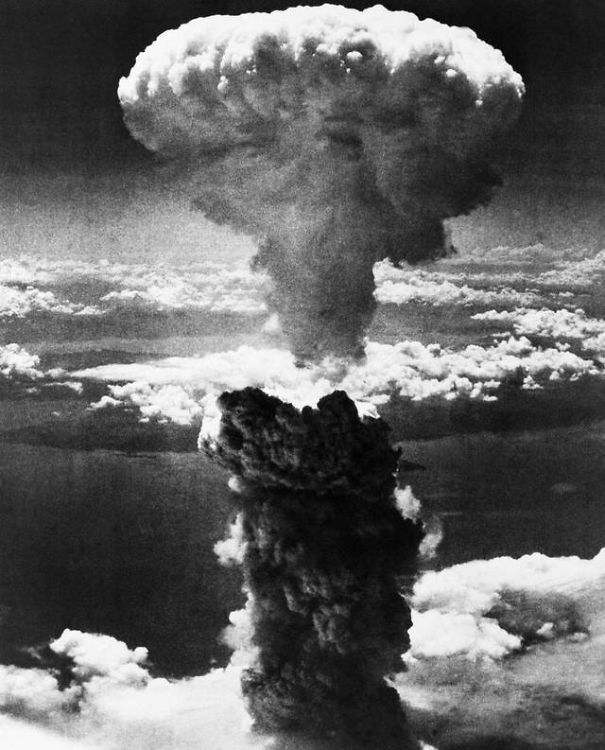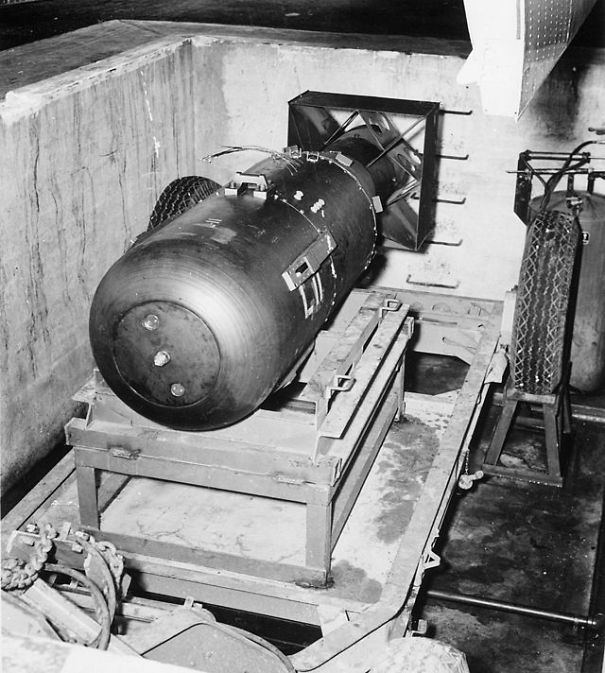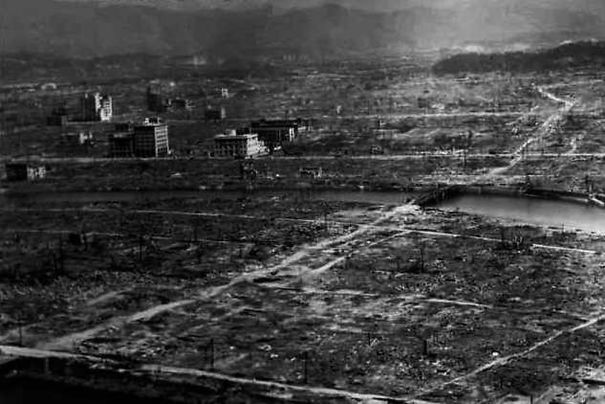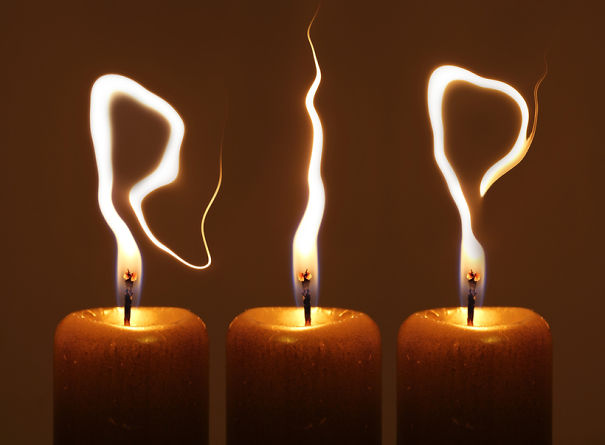At the start of World War II in 1939 the atomic bomb had not yet been invented. However, scientists discovered about that time that a powerful explosion might be possible by splitting an atom. This type of bomb could destroy large cities in a single blast and would change warfare forever.
A-bomb mushroom cloud above Nagasaki
The mushroom cloud above Nagasaki, Japan from the atomic bomb
Source: US Government
Albert Einstein
Albert Einstein came up with many of the theories that helped scientists in making the atomic bomb. When he realized that such a bomb could be made, he was frightened about what might happen if Hitler and Germany learned how to make the bomb first. He wrote a letter to US President Franklin Roosevelt telling him about the atom bomb. As a result, Roosevelt set up the Manhattan Project.
Manhattan Project
The Manhattan Project was the name for the research and development program for the atomic bomb. It started small, but as the bomb became more real, the United States added scientists and funding to be sure they were the first to have the bomb. Ironically, many of the scientists involved in making the bomb had defected from Germany. By the end of the project, funding had reached $2 billion and there were around 200,000 people working on the project.
The mushroom cloud above Nagasaki, Japan from the atomic bomb Source: US Government
The First Atomic Bomb On July 16, 1945 the first atomic bomb was exploded in the New Mexico desert. The explosion was massive and the equivalent to 18,000 tons of TNT. Scientists figured that the temperature at the center of the explosion was three times hotter than at the center of the sun. Although the scientists were happy they had successfully made the bomb, they also were sad and fearful. This bomb would change the world and could cause mass destruction and death. When President Harry Truman heard of the bomb’s success he wrote “We have discovered the most terrible bomb in the history of the world”. Deciding to Drop the Bomb By the time the first atomic bomb had been made, Germany had already surrendered and World War II in Europe was over. Japan was defeated as well, but would not surrender. The US was contemplating an invasion of Japan. Army leaders figured that anywhere from 500,000 to 1 million US and Allied soldiers would die in an invasion. President Truman decided to drop the atomic bomb instead. Hiroshima On August 6, 1945 an atomic bomb named Little Boy was dropped on Hiroshima, Japan. The explosion was huge, the city was destroyed, and tens of thousands of people were killed. The bomb was dropped by a plane named the Enola Gay which was piloted by Colonel Paul Tibbetts. The bomb itself was over 10 feet long and weighed around 10,000 pounds. A small parachute was on the bomb in order to slow its drop and allow the plane time to fly away from the blast zone
Nagasaki Despite witnessing the terrible destruction of the bomb on Hiroshima, Emperor Hirohito and Japan still refused to surrender. Three days later, on August 9, 1945, another atomic bomb, nicknamed Fat Man, was dropped on Nagasaki, Japan. Again the devastation was horrible. Surrender Six days after the bombing of Nagasaki, Emperor Hirohito and Japan surrendered to US forces. The Emperor announced this on the radio. It was the first time most Japanese had heard his voice.
Interesting Facts The lead scientist on the Manhattan Project was J. Robert Oppenheimer. He is often called the “father of the atomic bomb”. The first bomb dropped on Hiroshima was made from uranium. The bomb dropped on Nagasaki was made from plutonium, which was even more powerful than uranium. It is thought that at least 135,000 people died from the Hiroshima explosion and another 70,000 in Nagasaki. Many of these people were civilians including women and children. Hiroshima was chosen because it was a large port city with an army base. It also had not been damaged much by earlier bombings. This would show just how powerful the new weapon was.
R.i.p Over the next two to four months, the acute effects of the atomic bombings killed 90,000–146,000 people in Hiroshima and 39,000–80,000 people in Nagasaki; roughly half of the deaths in each city occurred on the first day.
Frank... did you read my new chapter? Not a lot of people read it and I’m think of not posting them anymore
Load More Replies...Frank... did you read my new chapter? Not a lot of people read it and I’m think of not posting them anymore
Load More Replies...
 Dark Mode
Dark Mode 

 No fees, cancel anytime
No fees, cancel anytime 




















































1
9